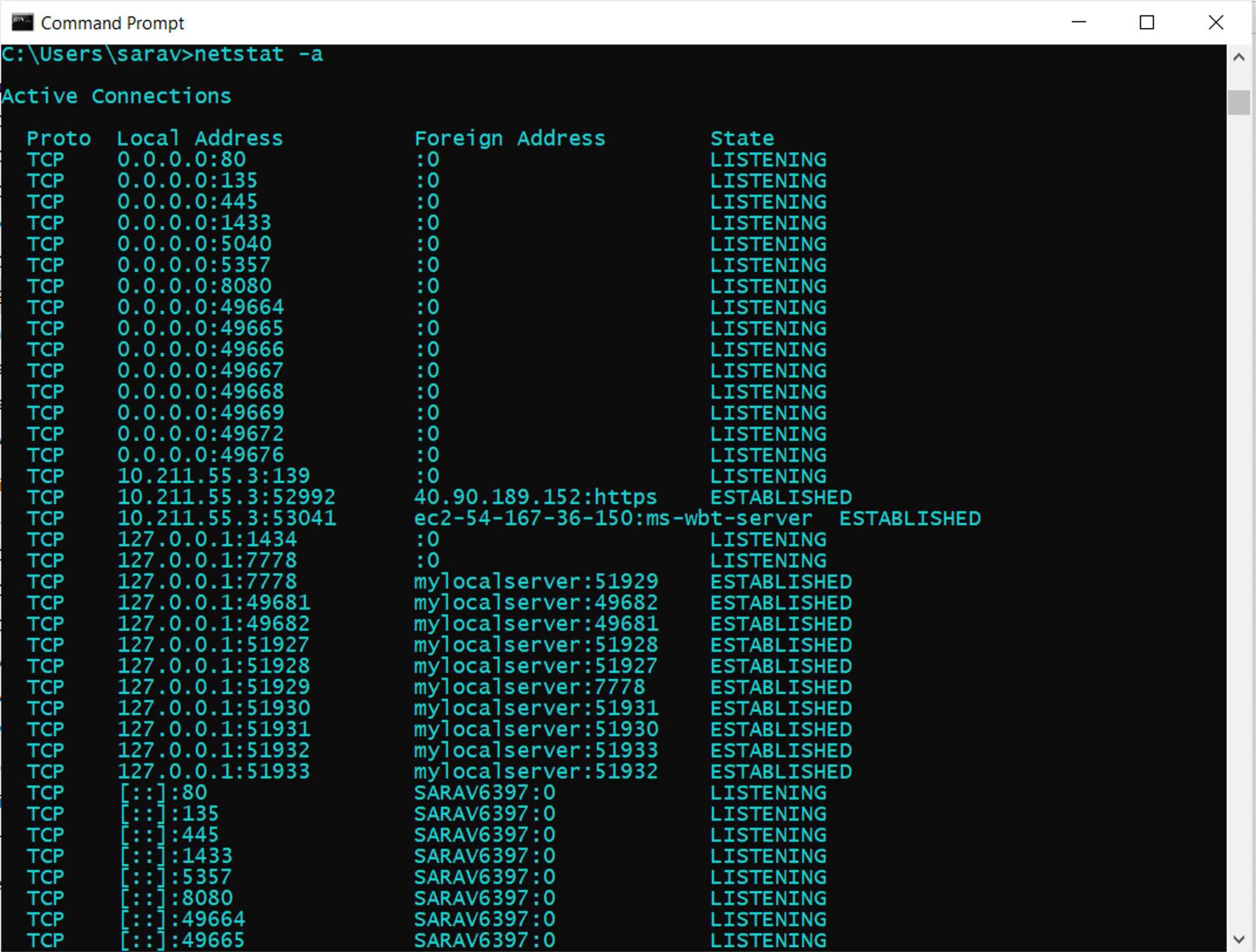
You can use a toolbar button or menu item to toggle the display of resolved names. Using TCPView When you start TCPView it will enumerate all active TCP and UDP endpoints, resolving all IP addresses to their domain name versions. Then save the output window of the TCPview to a file using Save menu item. The TCPView download includes Tcpvcon, a command-line version with the same functionality. Also, TCP/IP connections can also be established by selecting File|Close Connections, or by right-clicking on a connection, then choose Close Connections from the resulting context menu. Tcpview.exe updates every second, as its default, but the user can customize the rate using the Options|Refresh Rate. tcpview remote address owner-3fcf6605 net local group command shows.

It also downloads Tcpvcon, which is a command-line version with the same functionality. New endpoints are shown in color green and those that are deleted are highlighted in red. Endpoints are highlighted in yellow when the state from one update to the next are changed. Search for cmd in the start menu, right-click on the Command Prompt and. Command Line Arguments: Tcpvcon usage is similar to that of the built-in Windows. use in Windows with simple commands and apps like currports and tcpview. It is a Windows program that reports the name of the process that owns the endpoint and resolve all IP addresses to their domain name versions. You can save TCPViews output window to a file using the Save menu item.

The file tcpview.exe is used in showing detailed listing of all TCP and UDP endpoints on the computer system that includes the local and the remote address and state of TCP connections.


 0 kommentar(er)
0 kommentar(er)
